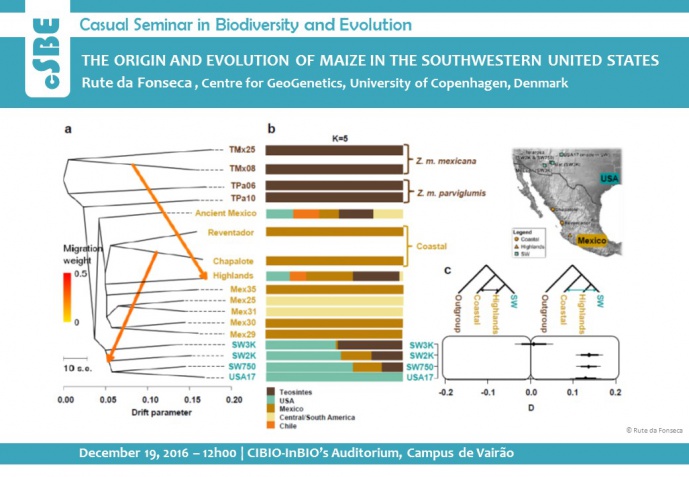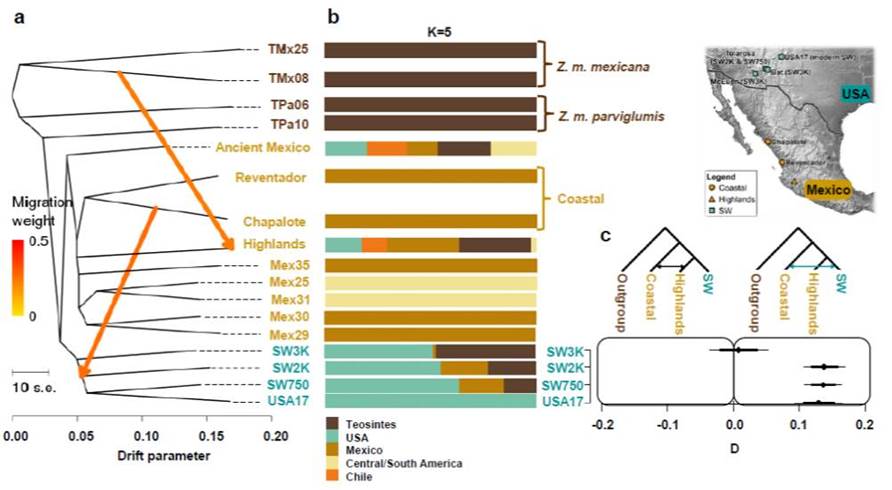THE ORIGIN AND EVOLUTION OF MAIZE IN THE SOUTHWESTERN UNITED STATES

CASUAL SEMINAR IN BIODIVERSITY AND EVOLUTION

The origin of maize (Zea mays mays) in the US Southwest remains contentious, with conflicting archaeological data supporting either coastal or highland routes of diffusion of maize into the United States. Furthermore, the genetics of adaptation to the new environmental and cultural context of the Southwest is largely uncharacterized. To address these issues, we compared nuclear DNA from 32 archaeological maize samples spanning 6,000 years of evolution to modern landraces. We found that the initial diffusion of maize into the Southwest about 4,000 years ago is likely to have occurred along a highland route, followed by gene flow from a lowland coastal maize beginning at least 2,000 years ago. Our population genetic analysis also enabled us to differentiate selection during domestication for adaptation to the climatic and cultural environment of the Southwest, identifying adaptation loci relevant to drought tolerance and sugar content.
Rute da Fonseca is an Assistant Professor at the Bioinformatics Center in Copenhagen University. She is a member of the Gilbert’s Group at Centre for GeoGenetics, sponsored by a Young Investigator grant from Villum Fonden. In 2010, Gilbert’s Group was awarded a ‘Sapere Aude’ that enabled the initiation of a large research project that aimed to uncover in detail the biomolecular changes undergone by maize during its domestication. Rute will present the results of this research recently published in Nature Plants. Major emphasis will be given to the analysis of whole-genome sequence data obtained from archaeological specimens, and the shifting of genomic patterns in response to selection.
[Host: Catarina Ginja, Environmental Archaeology]
Image credits: Rute da Fonseca